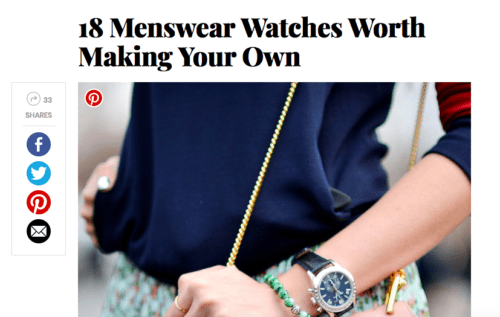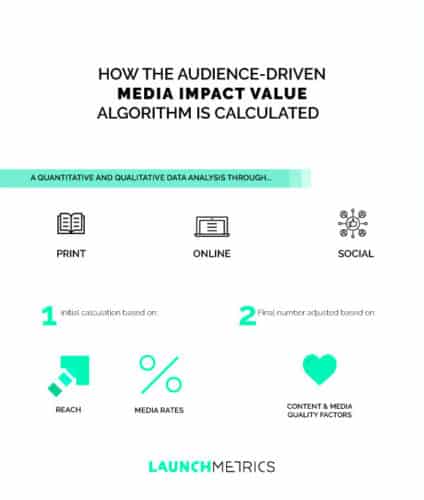Media performance is one of the strongest indicators of brand equity – but formulating the right media strategy can be tough, especially considering how strategies and media voices have changed over the years. Consumers are turning to peers, influencers and celebrities for advice and entertainment, leaving brands faced with navigating omni-channel media strategies. In fact, thanks to social media, influencers and their large army of loyal followers provide brands access to reach wider audiences while communicating the brand to them, breaking down the barriers of traditional media. These content collaborations have resulted in 31% of consumers buying a service or product because of an influencer mentioning it, as we told Luxury Daily.
But how do you determine which voices are generating the most impact for your brand? How do you know if your media strategy is really working?
Measuring media performance is challenging for a number of reasons:
- You can’t apply a general formula to evaluate media performance. Luxury, Jewelry and Watches are different from other industries. Images and videos are more powerful than text. And specific voices are more influential, especially from the likes of publications such as Forbes, WatchTime, QP Magazine or influencers like Chiara Ferragni and so on. Quality of coverage is just as, if not more important, than quantity of coverage.
- Influence exists in different ways on different channels. The digital revolution has brought different ways to connect with consumers. Now you’re juggling varying voices–whether its an influencer, a publication or simply your brand – across various channels and between paid, owned and earned initiatives. The possibilities are endless, making it even harder to calculate media impact.
- It’s difficult to compare performance. Because there’s no consistent way to measure impact, it’s challenging to compare performance across different strategies. How does a sponsored Instagram post compare to an editorial placement? Without knowing which initiatives are outperforming the rest, it’s hard to allocate budgets and resources strategically.
So where do you go from here? Start by breaking away from standard reach and engagement metrics. Then revamp your media monitoring and measurement process to focus on quality instead of quantity.
The quality of the content plays an important role as well. Articles or posts that focus solely on the brand or contain images and video also have a greater impact on brand equity than posts that simply have high engagement metrics. Wouldn’t you rather have a blog post dedicated solely to your company:

…rather than share the space with other brands:

These are just a few ways to assess media performance much more accurately. The result is a more holistic view of performance across various voices, channels, media types, regions, products and more.
Content quality is just the beginning though. In order to truly compare media performance across different strategies and initiatives you’ll need to develop a holistic approach that contains quantitative factors along with the qualitative factors. This can include reach and media rates along with content and media quality metrics – all of which vary slightly by channel.
Starting to sound complicated?
That’s why we developed an audience-driven Media Impact Value™ algorithm to do all the work. It relies on industry specific data and a proprietary formula to calculate the impact of all relevant media placements across different voices, channels, media types, time periods, products, regions and more.

An initial media value is calculated based on the reach and media rates of each channel and then it adjusts the final number based on various content and media quality factors. Some of these include:
- Increasing value proportionally to the number of reactions a post has (likes, comments, shares, etc.).
- The quality and relevance of publications to Luxury, Jewelry and Watches. Magazines like GQ have a higher value than magazines like the Daily Mail which aren’t as relevant.
- The number and quality of hashtags a post has. Posts with spam hashtags like #sale or #followforfollow are decreased.
The result is being able to link media coverage more accurately to events, campaigns and other initiatives providing insight into which strategies outperform the rest. This comprehensive evaluation gives you a better picture of the investments that are paying off, so you can arbitrate media budgets more effectively.
